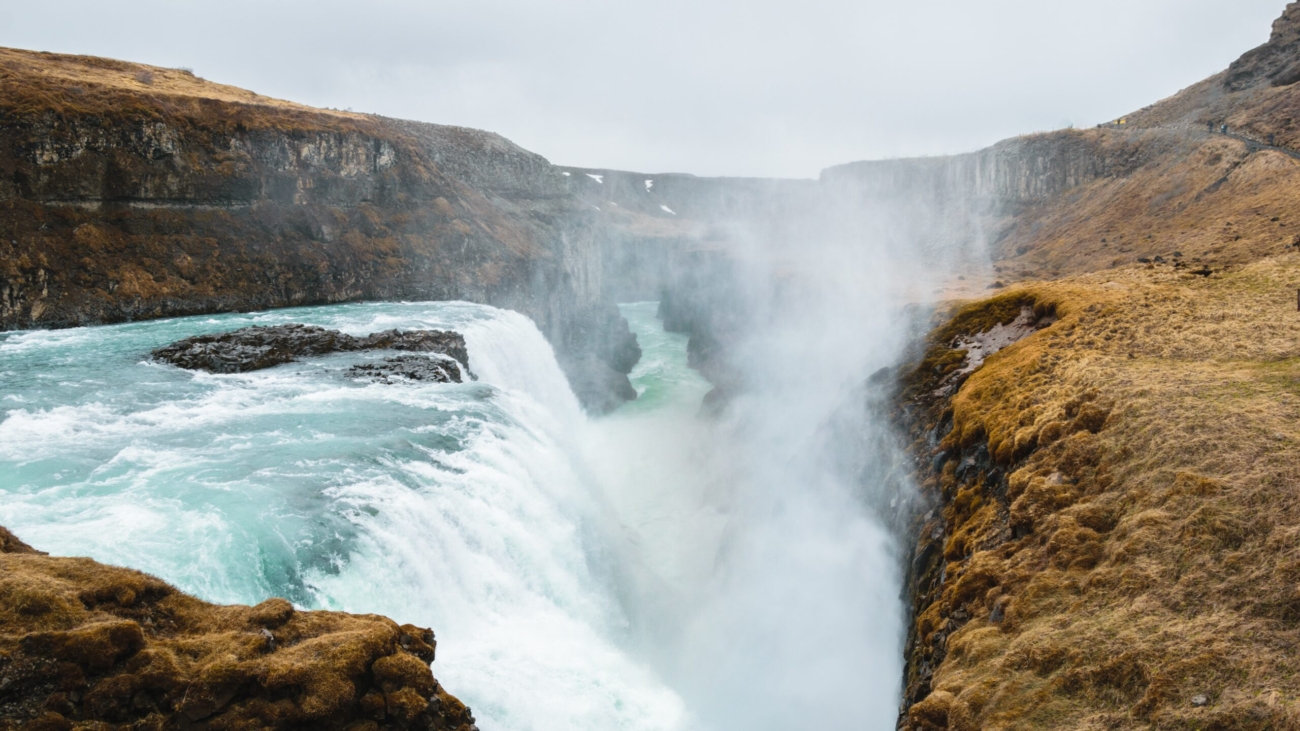If you’re looking to explore some of the world’s most breathtaking natural wonders, look no further than Iceland! From towering mountain peaks to cascading waterfalls, this country has a lot to offer. Check out this article and discover 7 of the most incredible waterfalls located in Iceland – get ready to be blown away!
Introduction to the Waterfalls in Iceland and their Location
The waterfalls in Iceland are some of the most incredible and beautiful in the world. They are located all across the country, from the Icelandic highlands to the coast. There are many different types of waterfalls, each with its own unique features. Some of the most popular waterfalls in Iceland include Gullfoss, Dettifoss, and Godafoss. All three of these falls are located in the southern part of Iceland. Gullfoss is one of the most famous waterfalls in Iceland and is often referred to as the “Golden Falls” due to its spectacular golden color. It is located on the Hvítá river and is approximately 32 meters (105 feet) tall. Dettifoss is another magnificent waterfall located in Iceland. It is situated on the Jökulsá á Fjöllum river and is considered to be one of the most powerful waterfalls in Europe with an average flow rate of 193 m3/s (6,400 cu ft/s). It is also believed to be the largest volume waterfall in Iceland with a height of 44 meters (144 feet). Godafoss, or “Waterfall of Gods”, is another breathtaking waterfall found in Iceland. It is located on the Skjálfandafljót river in northern Iceland and has a drop of 12 meters (39 feet). The waterfall got its name from an event that took
Gullfoss Waterfall
Nestled in the heart of Iceland’s Golden Circle is the spectacular Gullfoss Waterfall. Translated to “Golden Falls,” this natural wonder is not to be missed. At 32 meters (105 feet) tall, Gullfoss is one of Europe’s largest waterfalls. What makes it even more impressive is its two-tiered cascading design. The first drop is 11 meters (36 feet), followed by a drop of 21 meters (69 feet). Gullfoss is fed by the glacial Hvítá River and as such, its flow can vary depending on the time of year and weather conditions. In the winter, when the temperature dips below freezing, the waterfall freezes over and transforms into a magnificent ice sculpture. Whether you visit in summer or winter, Gullfoss is sure to take your breath away.
Dettifoss Waterfall
Iceland is home to some of the most beautiful and incredible waterfalls in the world. Dettifoss is one of them. It is located in Jökulsárgljúfur National Park, in the north of the country. The waterfall is fed by the glacial river Jökulsá á Fjöllum, which has its source in Vatnajökull, Europe’s largest glacier. Dettifoss is Europe’s most powerful waterfall, with an average water flow of 193 m3/s. The falls are 100 m (330 ft) wide and have a drop of 44 m (144 ft). The edge of the falls is almost perpendicular to the rocky canyon below. The best time to visit Dettifoss is during summer, when the weather is warmer and there is more daylight. However, be aware that the falling water can create a mist that can make the rocks slippery.
Selfoss Waterfall
If you love waterfalls, Iceland is the place for you! There are so many incredible waterfalls to explore, each one more beautiful than the last. Selfoss Waterfall is one of the most stunning in the country. located in southern Iceland, Selfoss Waterfall is easy to get to and definitely worth a visit. The waterfall is about 40 meters high and 12 meters wide, and it cascades down into a gorgeous pool below. The best time to visit is during the summer when the weather is warm and the days are long, but Selfoss Waterfall is beautiful any time of year. So what are you waiting for? Pack your bags and head to Iceland for an unforgettable adventure exploring some of the most incredible waterfalls in the world!
Glymur Waterfall
Glymur is Iceland’s second tallest waterfall, plunging 198 metres (650 feet) into the Hvítárvatn valley below. It’s a truly impressive sight, and one of the best places to experience the wild beauty of Iceland. To reach Glymur, you’ll need to take a short hike through the picturesque Hvítárvatn valley. The trail is well marked and relatively easy to follow, but can be muddy in places. Once you reach the waterfall, you’ll be rewarded with stunning views of the cascading waterfalls and the surrounding mountains. If you’re up for a challenge, you can even attempt to climb Glymur’s sheer cliff face! Experienced climbers can make their way to the top of the waterfall, but it’s not for the faint-hearted.
Skogafoss Waterfall
The first stop on our Icelandic waterfall tour is the stunning Skogafoss Waterfall. This massive waterfall tumbles down from a height of 200 feet, creating a misty spray that often creates rainbows in the air. The best views of Skogafoss are from the top of the falls, where you can see the entire waterfall and its double rainbow.
Hraunfossar Waterfall
Formed by lava, Hraunfossar waterfall is one of the most unique waterfalls in Iceland. The waterfalls flow over a black lava field into the glacial river below. The contrast of the white water and black lava make for a stunning sight. Visitors can walk across a bridge to get a closer look at the falls.
Haifoss Waterfall
If you’re looking for an otherworldly experience, look no further than Haifoss waterfall in Iceland. As you approach the falls, you’ll be greeted by a powerful force of water cascading down from a height of 122 meters (400 feet). The two-tiered cascade is truly a sight to behold and is one of the tallest waterfalls in Iceland. Beyond its impressive height, Haifoss has another claim to fame – it’s one of the few waterfalls in the world that drops directly into a canyon. The sheer cliffs on either side of the falls create an unforgettable experience. And if you’re up for a little adventure, you can even hike down into the canyon for a closer look at this natural wonder.
Tips for Visiting the Waterfalls in Iceland
1. Make sure to bring your hiking boots! The waterfalls in Iceland are best explored by foot, so make sure you have comfortable shoes for hiking.
2. Dress in layers. The weather in Iceland can be unpredictable, so it’s always best to be prepared with plenty of layers.
3. Don’t forget your camera! The waterfalls in Iceland are truly breathtaking and you’ll want to capture as many memories as possible.
4. Be aware of the tides. Some of the waterfalls in Iceland are located near the ocean, so make sure to check the tide schedules before you go exploring.
5. Respect the environment. Remember that you are visiting a sensitive natural environment and take care to Leave No Trace when exploring the waterfalls in Iceland.
Conclusion
Waterfalls in Iceland really do offer some of the most captivating and outstanding beauty on Earth. From the calm serenity of Seljalandsfoss to the roaring power of Goðafoss, these waterfalls are breathtakingly majestic and sure to leave a lasting impression. So why wait? Plan your trip now and get ready for an unforgettable experience!

